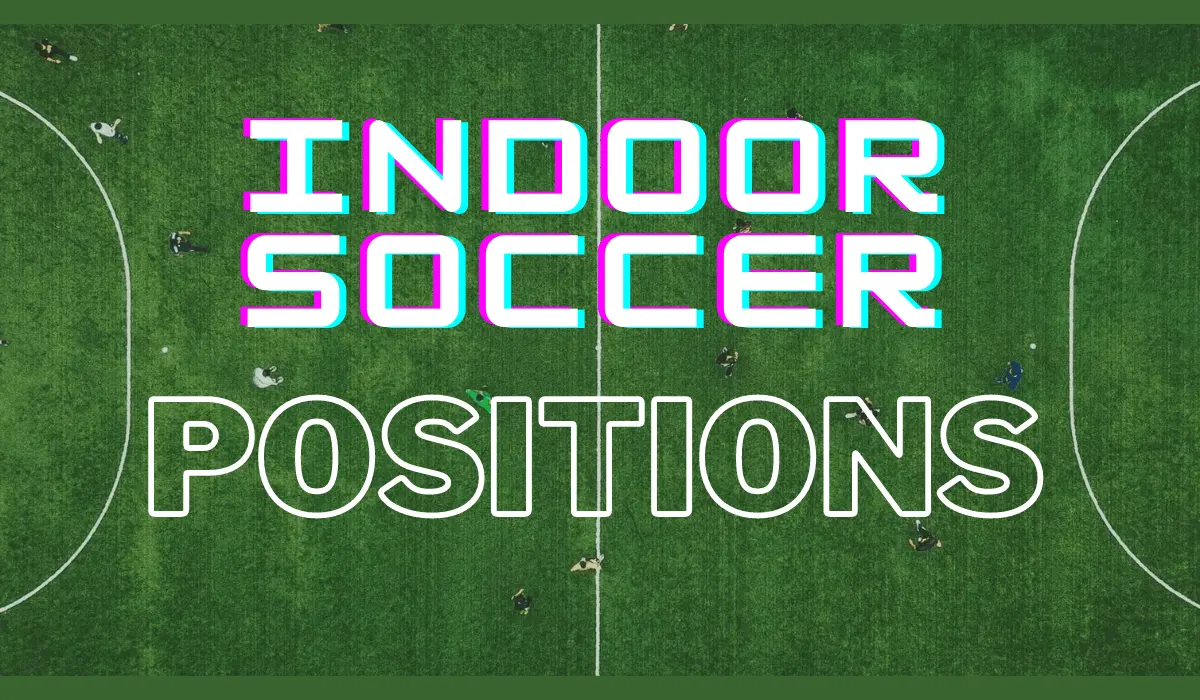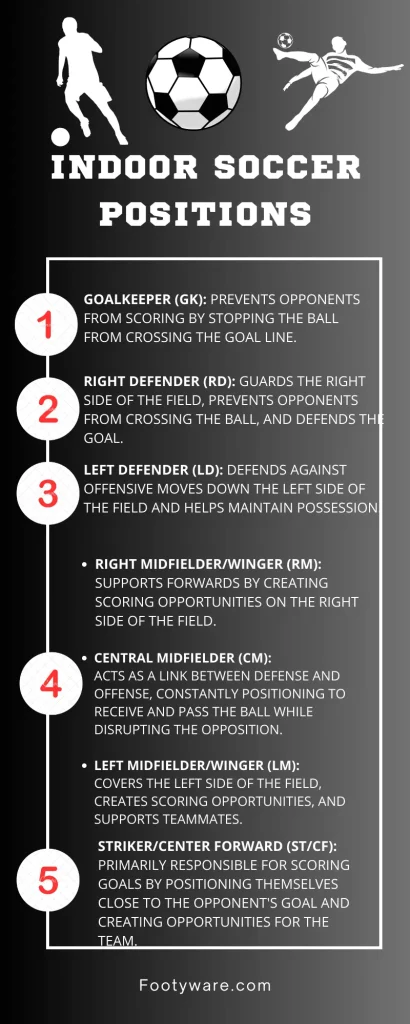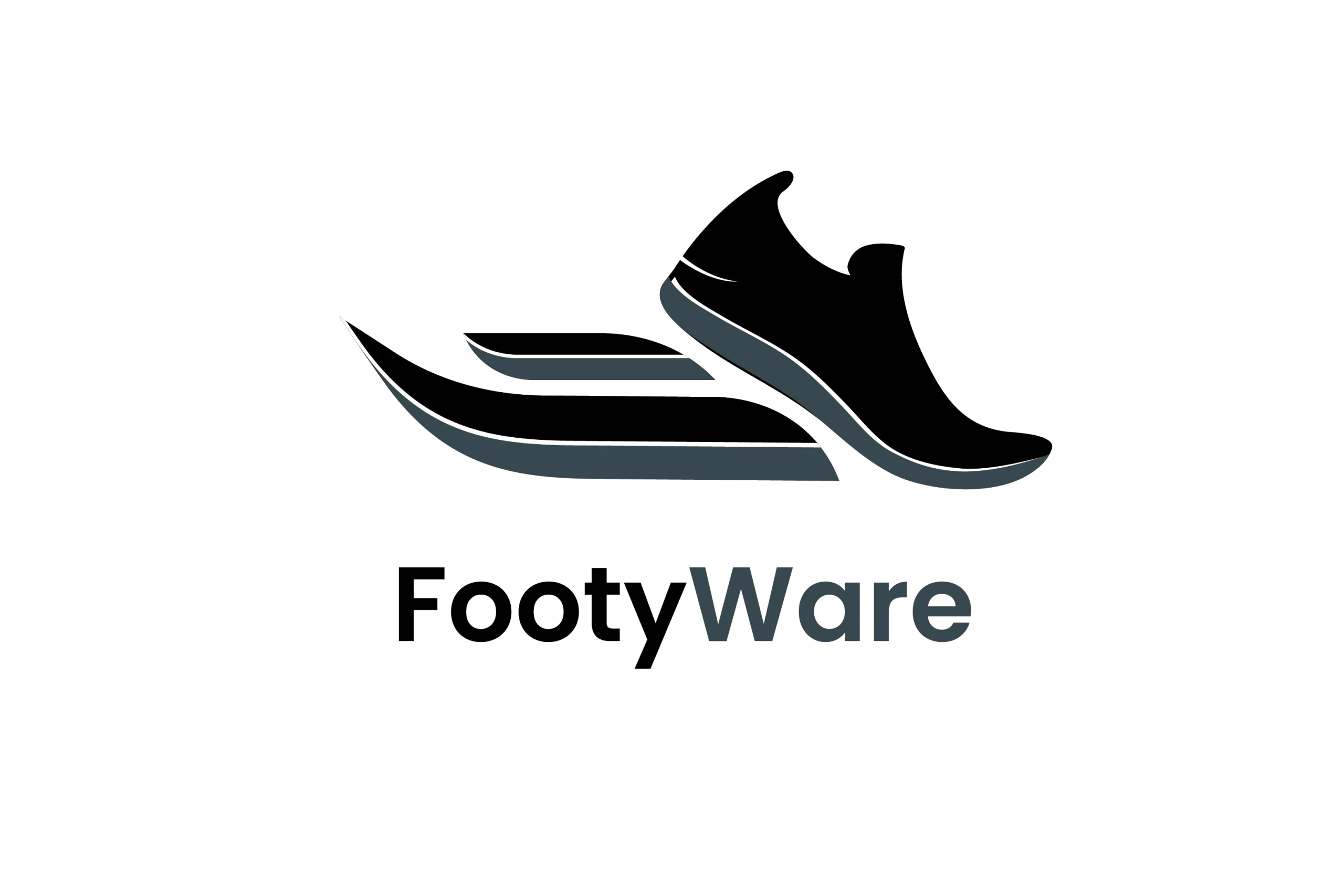Top Positions in Indoor Soccer – Insights of Indoor Soccer

Forget sprawling fields and cozy autumn afternoons – indoor soccer explodes onto polished courts in local rec centers and vibrant arenas across the USA, where every touch is a brushstroke in a thrilling masterpiece.
But unlike its 5-a-side futsal cousin, 7-a-side indoor soccer demands tactical depth and nuanced roles. So, grab your metaphorical conductor’s baton, football fans, as we unravel the intricacies of 7-a-side indoor soccer positions:
The Defenders
- Anchor (Goalkeeper): The last line of defense, an acrobatic maestro like US futsal legend Diego “Chino” Ayala. Think quick reflexes, strategic positioning, and fearless dives to safeguard the net.
- Sweeper (Center Back): The defensive mastermind, orchestrating the backline like MASL stalwart Felipe dos Santos anchoring Baltimore Arena. Vision, composure, and tactical awareness are their keys to success.
- Fullbacks (Lateral Defenders): Blistering speed meets defensive grit, imagine MASL star Franck Tayou’s overlapping runs combined with San Diego Sockers legend Jonathan Santana’s tackling prowess. They attack down the flanks, but always with an eye on defensive stability.
The Midfielders
- Holding Midfielder (Defensive Midfielder): The engine of the team, the tireless terrier snapping at opponents’ heels. Think Chicago Fire defender Cheka Bolden’s relentless energy disrupting attacks and initiating counter-attacks.
- Central Midfielder (Box-to-Box Midfielder): The midfield maestro, dictating the tempo like MASL MVP Lucas Rodriguez pulling the strings. Vision, passing, and tactical intelligence are their tools to control the game.
- Attacking Midfielder (Playmaker): The creative spark, a magician like San Diego Sockers legend Alejandro “Cubo” Moreno carving open defenses with pinpoint passes. Skill, imagination, and vision are their weapons to unlock scoring opportunities.
The Forwards
- Wingers (Wide Forwards): Blinding pace meets precise crossing, imagine MASL MVP Franck Tayou’s dazzling dribbling tormenting defenders on the flanks. They terrorize defenses with electrifying runs and create goals with inch-perfect deliveries.
- Pivot (Center Forward): The clinical finisher, always lurking like Milwaukee Wave legend Patricio “Pato” Arce waiting for the killer instinct. Poaching skills, aerial prowess, and composure are their tools to convert chances into celebrations.
Remember, 7-a-side requires adaptability. Players need to think fast, react quickly, and seamlessly transition between roles. The Anchor might become a sweeper on the attack, the Fullbacks morph into Wingers, and the Central Midfielder transform into a Box-to-Box maestro.
So, the next time you witness a 7-a-side clash in your local arena, don’t just be mesmerized by the goals and tricks. Look for the tactical ballet unfolding, the seamless switching of roles, and the silent communication that orchestrates every move.
With a deeper understanding, you’ll not only elevate your enjoyment of the game but also gain a newfound appreciation for the dynamic symphony of 7-a-side indoor soccer here in the USA.
Top Soccer Positions in Indoor
In team sports, one thing is very common you’ve to work as a unit like a hand. Consider if each finger starts doing things on its own it’ll be a total disbalance but when it works under one brain and then fingers start working with the hand then you can make use of it efficiently.
Indoor soccer positions are similar to those in outdoor soccer but often adapted to suit the smaller playing space and faster pace of the game. Let’s take a closer look at the top 7 key positions in indoor soccer mostly being applied.

Goalkeeper Duty is to Stop the Ball from the Goal
The primary role of a goalkeeper is to prevent the striker from scoring the goal, to prevent the ball from crossing the goal line. He is the last man to stop and save his team. The goalkeeper must position himself in the D area where he can handle the ball legally he should remain in the penalty area.
Goalkeepers are often known as goalies or GK. Goalies must be leaders leading from the back and constantly motivating their team even if they’re losing the game he is the one who can make them believe that they can turn the table within split seconds.
The goalie at the back sees almost all the goal until his opposite post so his vision matters the most. If he knows how to dictate the game from the back constantly communicating with his teammates he can make his team bang goals but he should be a very good reader of the game.
The goalkeeper must communicate with his players to manmark opponents and he should constantly do this throughout the game.
He should possess a sharp mind and deeply understand the loose points as well as strong points of his team and after that make the team fight accordingly in the best possible way. In short, the goalkeeper must be a leader on the pitch.

Defenders on Guard to Protect the Goal
The defender’s main objective is to make the attacks of the opponents useless and convert them into sudden attacks on the opponents and make them pay by scoring goals, capitalizing on their mistakes, and giving composed passes from the back to make your team do the best.
Defenders must be dominating in the air because the head is to be used very dominantly other than that sometimes you’ve to be nasty while playing as a defender in an indoor soccer competition.
The defender must know how to block a shoot legally without giving a foul and avoid taking caution and then cards.
Teams should be so well coordinated that they should know how to exchange positions and cover each other mistakes while playing. Also, they should know how to support each other. The defender must be a very cool-minded player even if he charges someone physically he shouldn’t lose the focus of the game.
Mainly there are two important positions of defenders in indoor soccer one is called right defender while the other is called left defender.
Right Defender Role and Responsibilities
The defender playing on the right side of the goalkeeper is called the right defender who’s responsible for defending the attack from the right side in every form an attacker must not dribble past him and shoot at the goal easily also he should neutralize crosses coming from the right side.
Right defenders must also take part in building the attack and make them pay for the shortcomings of the opponents while in defense they should neutralize attackers through fierce tackling and charging them physically. Never let an attacker get comfortable on the field otherwise they’ll make you pay in split seconds like Ricardinho in futsal.
He should be very good at covering counterattacks and neutralizing the tactics used by the opponents to score a goal. He should be very calm and passionate about the game. Besides all this, he should be an avid reader of the game and know how to turn the tables.
Left Defender Stop Attack from his Side
The left defender has almost the same responsibility as the right defender, but he has to apply this on the goalkeeper’s left side and the area. He should be able to prevent the offensive moves of the opposition from the left side on the indoor soccer field.
He has to have the vision of an experienced yet the most composed player to play accurate passes directly to the striker or his midfielder. His position is on the left side of the goalkeeper near him. He should be very good at communicating during the game.
Best reader of the game and strategizes it according to the needs of the game if you’re losing the game he should know he has to keep the attack running while defending his area efficiently. If his team is winning and the other team is tough he should know how to waste time to keep the clock running.
The left defender must be very good at neutralizing the right winger who’s attacking from his side even if it’s needed just take him physically but don’t let him exploit you because once he starts he’ll ruin your team so better to shut him in the start of the game.
He should be very good at tracking the ball, monitoring wingers and midfielders, and blocking their shooting efforts. They’re often assigned to mark the opposition right winger and prevent them from scoring goals and taking shots on target.
He should be very good at intercepting passes, keeping the ball possession composed, and building the attack from the back.
Midfielders to be Creative and Create Chances of Goal
Midfielders should always be very creative and composed with the ball. A midfielder is the engine of the team who’s working on building the attack while also helping the defense and trackbacks the opponents.
Midfielders must’ve been a combination of a striker, defender, and master of their position because they’ve to constantly switch positions and communicate to make their team work like one unit.
Midfielders must be very good at shooting, dribbling, tackling, Heading, and creativeness while they should be very good at one-on-ones or 50-50 challenges. He should have the mentality of winning the ball and try always to build the attack.
Adult indoor soccer players should be mature enough to read the game and what’s the most important thing to do now. For if you’re winning what you’ll have to do and if you’re losing what exactly should be your mentality?
I will be explaining how they should be capable of doing as right, left, and central midfielders.
Right Midfielder/Winger to Cross the Ball to Striker
The left-footed player is the most preferred one to play as a midfielder on the right side of the pitch he is one near to right defender and central midfielder. He should be good at covering his right defender too if there’s a load on him.
His primary responsibility is to create chances for the striker and his fellow midfielders or even dribble past defenders and score one on his own. He should be good at twisting and turning on right-wing and be good at trickery. You can also call him a right winger.
Upon charging the opponents together and putting them under pressure to take the ball from them and to feed their striker to score. A right midfielder should be very good at sprinting with the ball and be able to do some overlapping runs and different skills demanded by the pace of the game like stepovers or dropping shoulders and making defenders dance.
They should be very good at utilizing the walls and taking full advantage. As a result, they should exploit the opponents on the field of indoor soccer.
The Central Midfielder’s Role is to Hold the Game
The central defender must be the most experienced as well as a very skillful player because he has to work as a pivot and revolve around the pitch within split seconds without their opponents knowing his position before receiving the ball.
He should be very good at positioning himself to receive and then play a creative pass creating chances for your fellow players to have a chance to bang goals. He should be very good at disrupting the opposition’s play. After the goalkeeper, he’s the one who should be good and reading and man-marking the opponent’s players.
His main location is to move around the center and create spaces to play tiki-taka. He should be good at reading the game and adjusting himself and the team accordingly. They work as a bridge between defenders and strikers, which means they’ve to be very active and mentally present too not just physical presence matters.
Central midfielders should have the skills on the ball to move around and make the pass count. Putting in strong tackles and dictating the pace of the game is the real job of a central midfielder. His decision-making power should be very precise and anticipate the opponent’s moves.
Left Midfielder/Winger to Create Space and Goal Scoring Opportunities
Left midfielder often called a left winger like Ronaldo used to play in Manchester United or Madrid soccer this is a very important yet very creative position for the attackers because in this position the attacker has the advantage to cut the ball inside and boom on the target same goes for the right-wing position.
He has to cover his left side and do proper runs on the wing to attack and also to track back and help his left defender out. He should be very good at overlapping runs and attacking in a well-planned way to score or assist the goal.
His main job is to create scoring opportunities and also score goals wherever stands a chance. He should be good at taking on defenders with his unmatching skills and control. He should be very good at twisting and turning the ball. He should be very good at shooting the ball explosively with sheer power and accuracy.
Striker/Center Forward has to Score a Goal
The player decides the fate of the game because one or two chances are created in the game and a deadly striker has always the capacity to make them count because the main responsibility of a striker is to score goals and banging them in each game is a sign of an excellent striker.
His main position is in the center of the field close to the opponent’s goal because this is the position from where the striker can make it count. A striker should be very skillful with some best controlling and striking skills. He should be good body-wise and able to shield the ball from defenders.
The striker should be an opportunist who’s always alert and searching for that one pass to score the goal. He should not only be good at scoring goals but also make opportunities for his teammates to score means he should be good at laying off the ball as his main job is offensive play.
A striker should be very good at maneuvering the ball and keep making goal-scoring opportunities as well as scoring goals
Positions in Indoor Soccer Overall
Each indoor soccer position carries specific responsibilities as mentioned above although these may vary based on team strategies and formations. A thorough understanding of each role enables players to maximize their skills and contribute effectively to their team.
Additionally, comprehending the differences between indoor and outdoor soccer rules enhances the significance of each player’s role but indoor soccer is more compact, pace-oriented, and about sharp movements compared to outdoor soccer.
Tips for Playing Indoor Soccer
Indoor soccer presents unique challenges and opportunities for players. Here are some useful tips to keep in mind to improve your game and get the better of others from indoor soccer.
Conclusion of Positions in Indoor Soccer
The final whistle blows, the court erupts in cheers, and another indoor soccer masterpiece finds its conclusion. But the magic truly lies not just in the goals and triumphs, but in the intricate ballet of positions that bring the game to life.
Each player, from the acrobatic Goalkeeper guarding the fortress to the electrifying Winger tearing down the flanks, is a brushstroke in a vibrant canvas. Fixos like futsal maestro Andressa Alves orchestrate the symphony of attacks, while Pivots like Leandro Martins lurk in the shadows, waiting for the moment to pounce.
Understanding these positions isn’t just about appreciating individual brilliance. It’s about recognizing the cohesive tapestry woven by tactical awareness, seamless role transitions, and silent communication.
Imagine the thrill of witnessing a Rafael dos Anjos (Baltimore Arena) commanding the backline and then morphing into an attacking threat, or a Franck Tayou (MASL) dazzling on the wing before dropping back to defend with the tenacity of a lion.
But the impact of these positions extends far beyond the court. Indoor soccer teaches adaptability, teamwork, and leadership – qualities that shine both on the field and in everyday life.
The goalkeeper’s resilience shines in a student facing academic challenges, the playmaker’s vision translates to success in collaborative projects, and the winger’s electrifying speed fuels the drive to overcome obstacles.
So, the next time you watch indoor soccer, remember that the positions are not just labels. They are catalysts for growth, testaments to teamwork, and symbols of individual empowerment. Look beyond the trophies and cheers, and witness the enduring legacy etched in every pass, every tackle, and every goal.
In the symphony of indoor soccer, every position plays a vital note, composing a melody of passion, talent, and the transformative power of the beautiful game.

